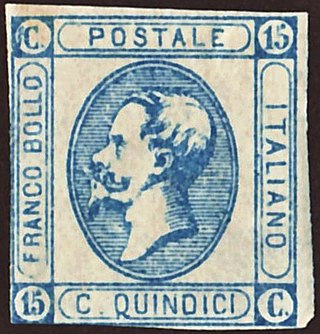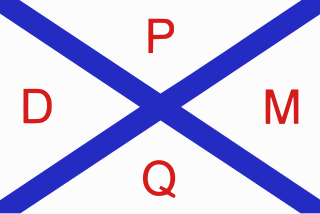
This is an introduction to the postal and philatelic history of Italy.
Each "article" in this category is a collection of entries about several stamp issuers, presented in alphabetical order. The entries are formulated on the micro model and so provide summary information about all known issuers.
Alfred F. Lichtenstein was one of the most famous American philatelists.

The Mexican postal system has its roots in the Aztec system of messengers which the Spanish adopted after the Conquest. A postal service was established in 1580, mainly to communicate between the viceroyalty of New Spain with the motherland Spain. During the 18th century, Spain established a formal postal system with regular routes. In 1856, Mexico issued its first adhesive postage stamps, with "district overprints", a unique feature among postal systems worldwide, employed to protect from theft of postage stamps.

Argentine postage stamps were first issued in 1858 by the Argentine Confederation and nationally by the new Republic's National Postal Service in 1862. Due to the continuing civil wars, a number of provinces and territories, particularly in the then-remote far north and far south, continued to issue their own postage brands and stamps for some time, afterwards; some of these issues have since become collectors' items.

China Zorrilla was an Uruguayan theater, film, and television actress, also director, producer and writer. An immensely popular star in the Rioplatense area, she is often regarded as a "Grand Dame" of the South American theater stage.

Correos de México, formerly named Servicio Postal Mexicano (Sepomex), is the national postal service of Mexico. It has been active for over 100 years, and its system has roots going back to 1580.

This is an outline of Uruguay's monetary history. For the present currency of Uruguay, see Uruguayan peso.
Antigua was discovered by Christopher Columbus, in 1493, and was named after the church of Santa Maria la Antigua in Seville. It was first settled in 1632. By the Treaty of Breda in 1667 it became a British Possession.

Colombia is a country in north-western South America. Colombia is bordered by Venezuela, Brazil, Ecuador, Peru, Panama and the Caribbean Sea and the Pacific Ocean. With a population of over 45 million people, Colombia has the second largest population in South America, after Brazil. The capital is Bogotá.

This is a survey of the postage stamps and postal history of Costa Rica.

El Salvador became independent from Spain in 1821. It has produced its own stamps since 1867.

This is a survey of the postage stamps and postal history of Uruguay.

This is a survey of the postage stamps and postal history of Spain.
Louis Antony Micheloni was a Uruguayan physician, fencer and philatelist.

The Ferrer block is a corner block of 15 of the 80 centésimos green 1856 'Diligencia' (Suns) postage stamps, and is regarded by many philatelists as the most important item of Uruguayan philately. Fred Melville, speaking philatelically, called it "one of the seven wonders of the world". It is the largest known multiple of this issue of which only a few blocks are known to exist. Most of the plating information about this issue has been derived from this one block.

Uruguay has issued revenue stamps since 1871. Uses have included documentary taxes, consular services and tobacco and alcohol duties.

Emanuel Joseph Lee was a philatelist who was a specialist in the stamps of Uruguay.

Enriqueta Compte y Riqué was a Spanish-born Uruguayan teacher. She was the founder of the first kindergarten in South America in 1892, and famous for having contributed decisively to preschool teaching in Uruguay and Latin America.

Parva Domus, officially the Republic of Parva Domus Magna Quies is a self-proclaimed micronational republic surrounded by the city of Montevideo, Uruguay. The nation has served as a civil, cultural and recreational association since its foundation in 1878.
















